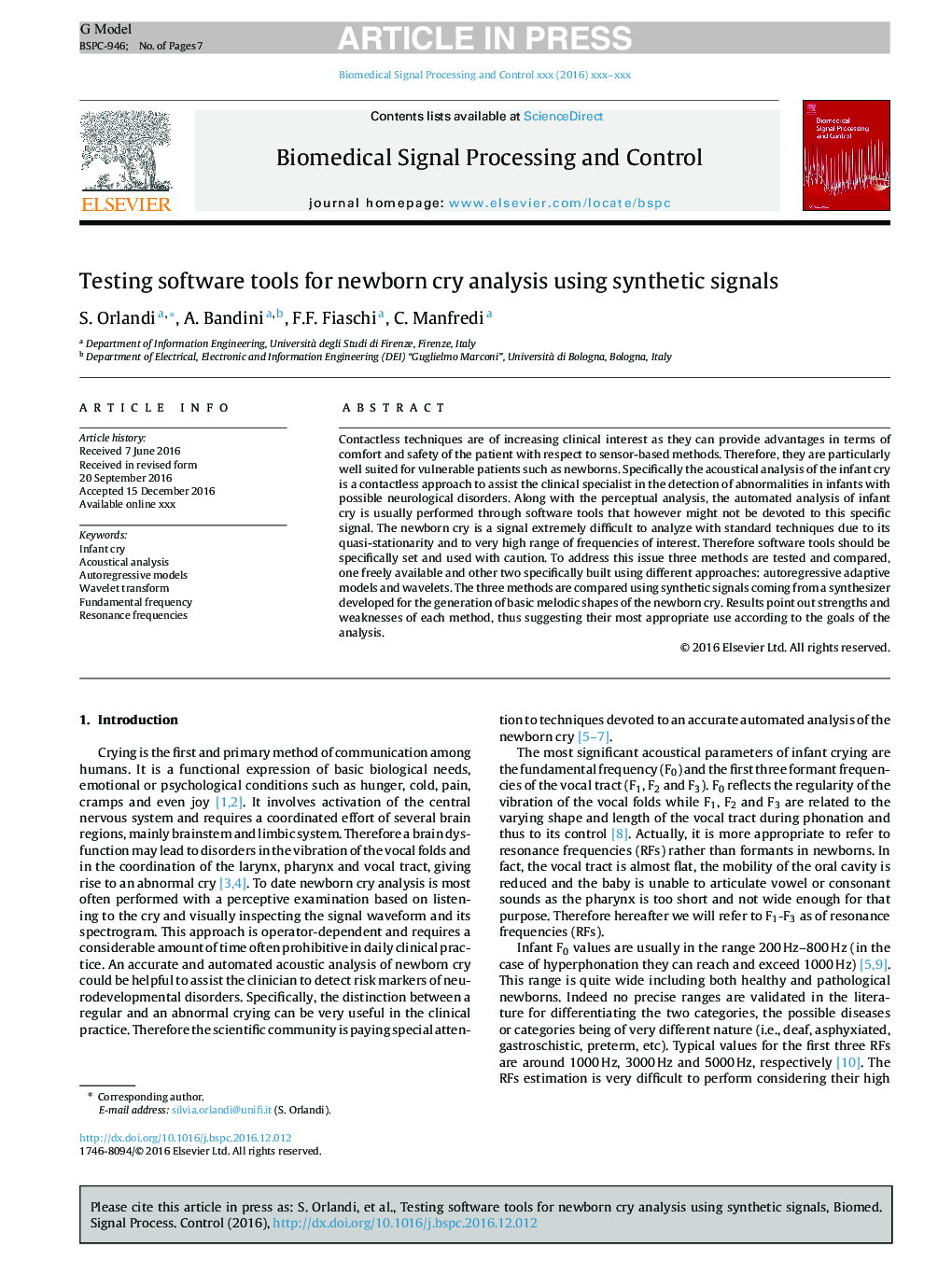| Article ID | Journal | Published Year | Pages | File Type |
|---|---|---|---|---|
| 4973409 | Biomedical Signal Processing and Control | 2017 | 7 Pages |
Abstract
Contactless techniques are of increasing clinical interest as they can provide advantages in terms of comfort and safety of the patient with respect to sensor-based methods. Therefore, they are particularly well suited for vulnerable patients such as newborns. Specifically the acoustical analysis of the infant cry is a contactless approach to assist the clinical specialist in the detection of abnormalities in infants with possible neurological disorders. Along with the perceptual analysis, the automated analysis of infant cry is usually performed through software tools that however might not be devoted to this specific signal. The newborn cry is a signal extremely difficult to analyze with standard techniques due to its quasi-stationarity and to very high range of frequencies of interest. Therefore software tools should be specifically set and used with caution. To address this issue three methods are tested and compared, one freely available and other two specifically built using different approaches: autoregressive adaptive models and wavelets. The three methods are compared using synthetic signals coming from a synthesizer developed for the generation of basic melodic shapes of the newborn cry. Results point out strengths and weaknesses of each method, thus suggesting their most appropriate use according to the goals of the analysis.
Keywords
Related Topics
Physical Sciences and Engineering
Computer Science
Signal Processing
Authors
S. Orlandi, A. Bandini, F.F. Fiaschi, C. Manfredi,
